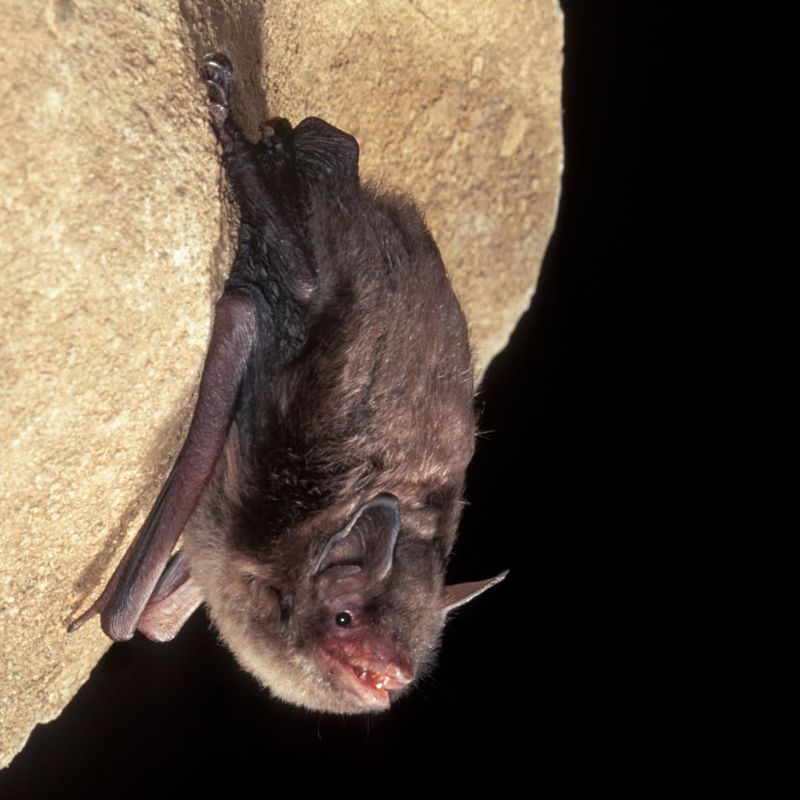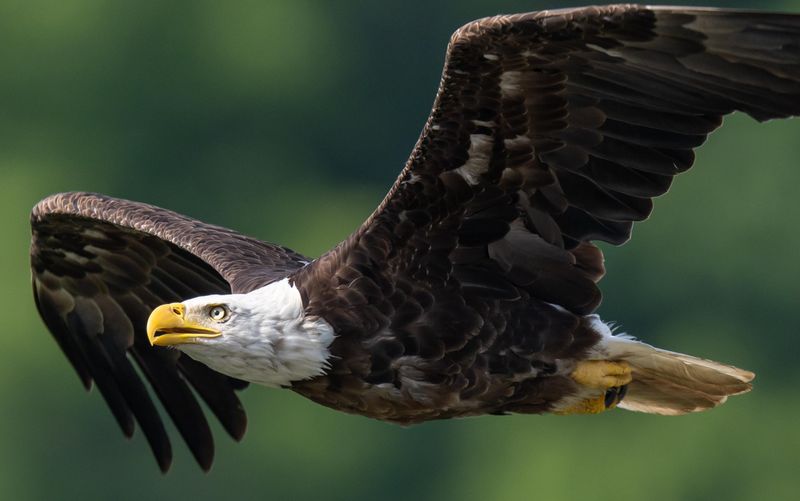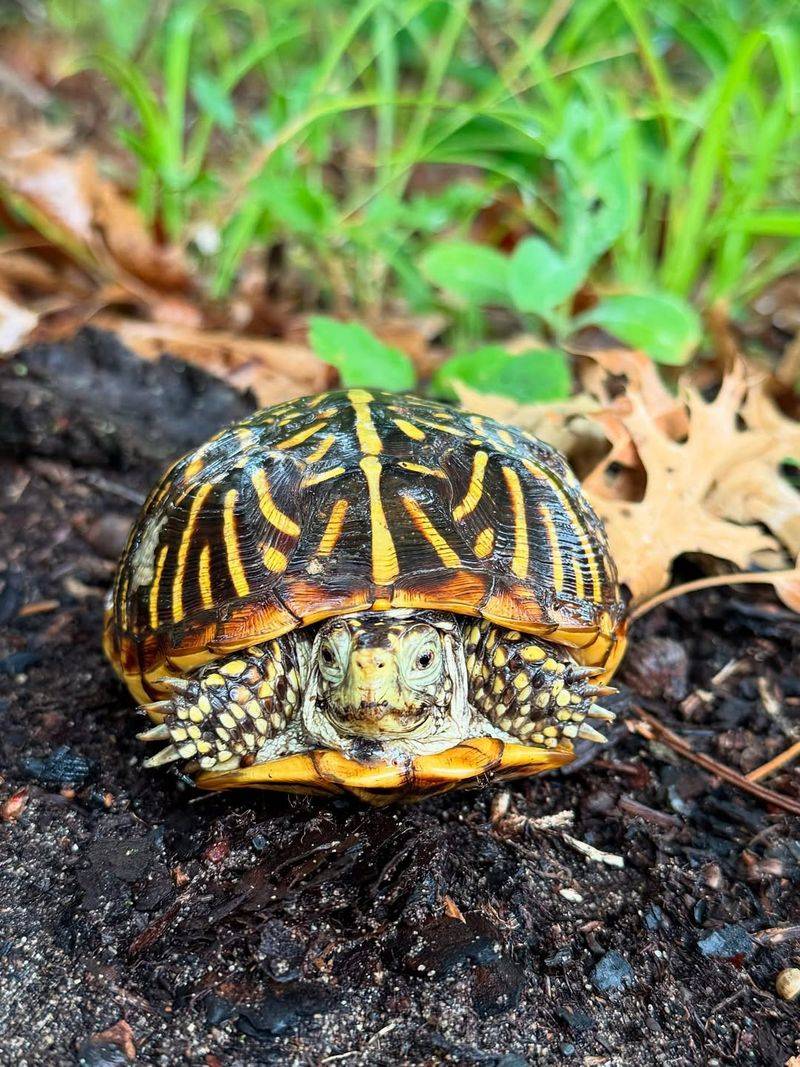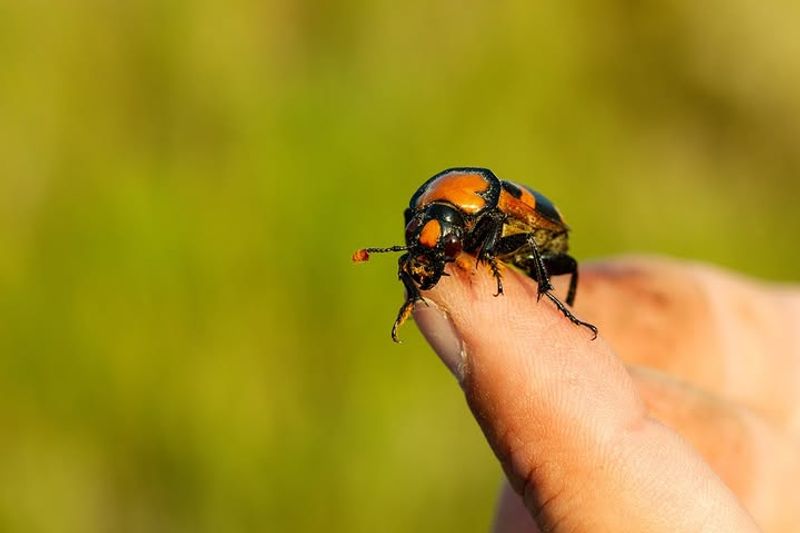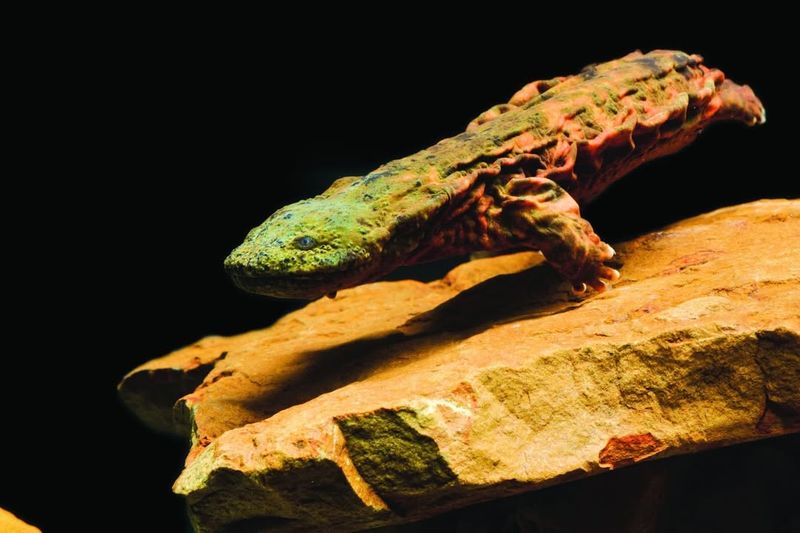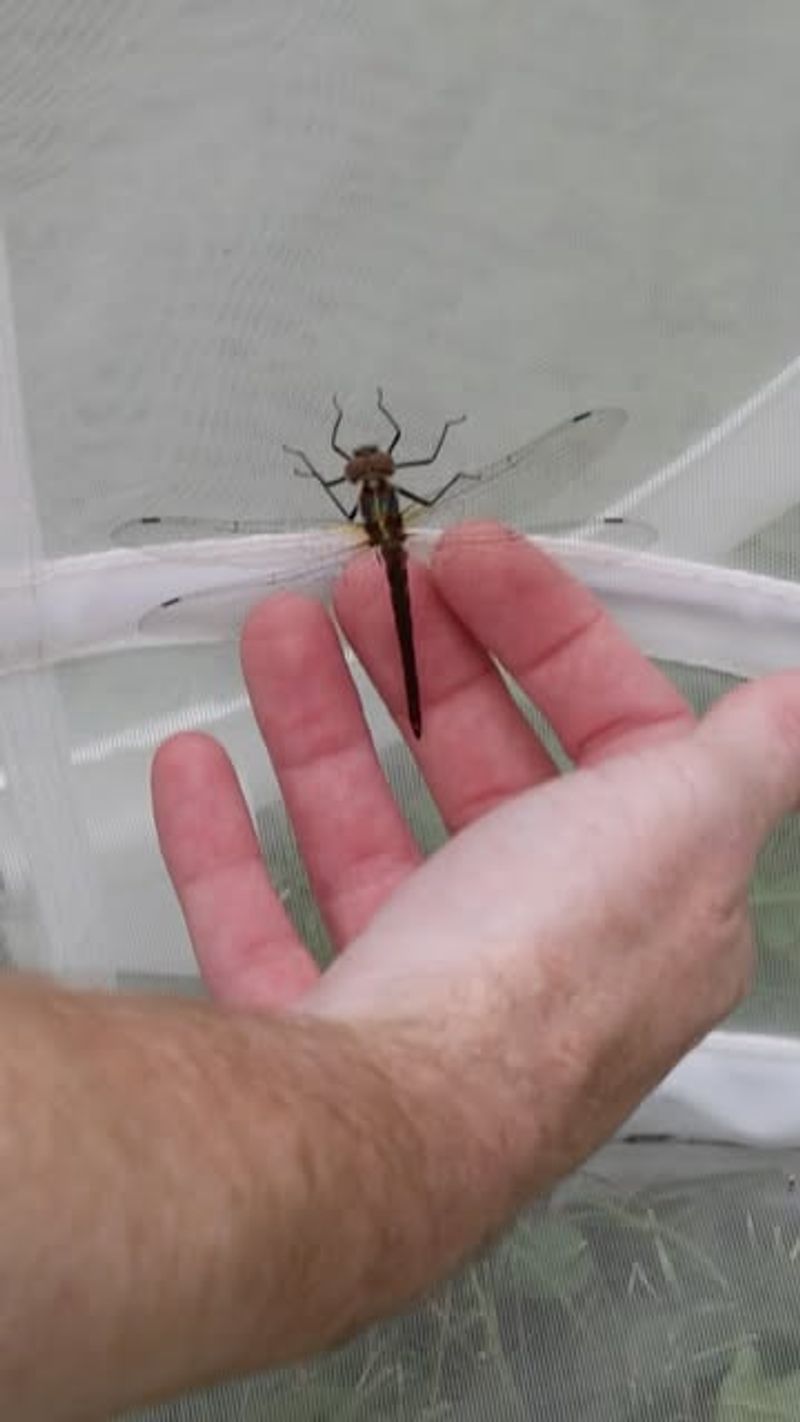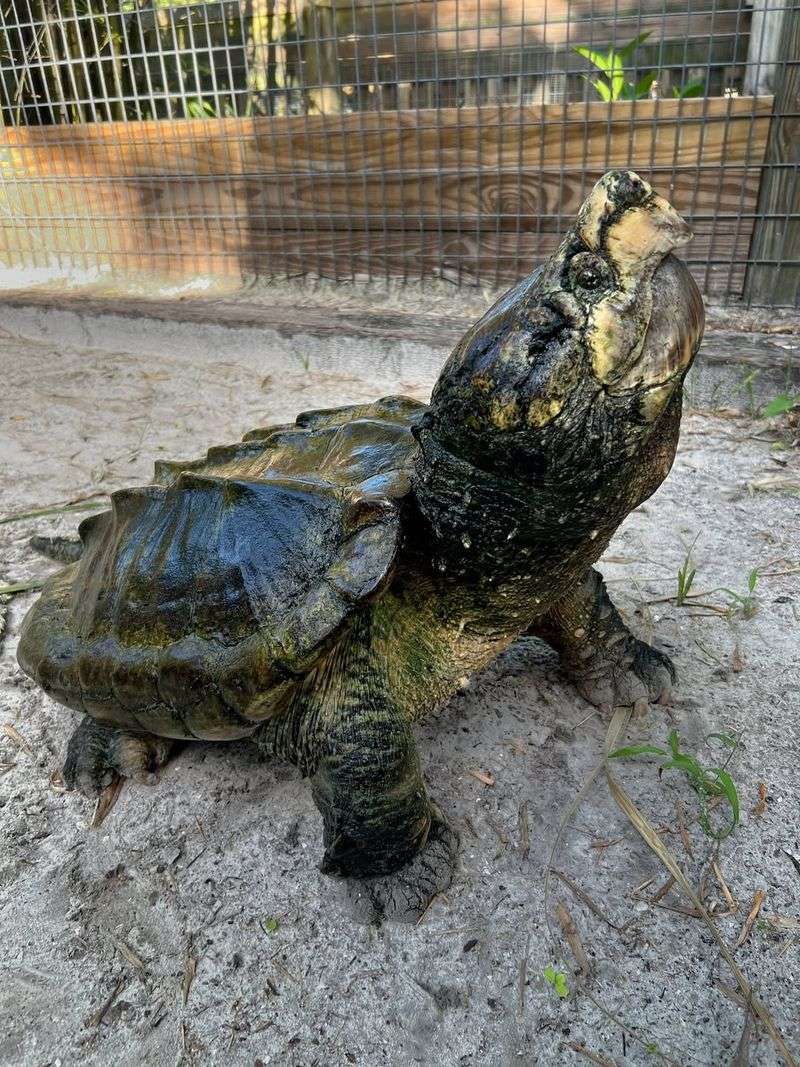You might be surprised by the creatures hanging around Missouri yards, and some of them come with rules you definitely don’t want to mess with.
A few of these locals look harmless, but the law treats them like VIP guests. I’ve bumped into a couple on hikes myself, and trust me, it’s always a moment.
Before you try to shoo anything away, it’s good to know which critters are actually off-limits.
1. Indiana Bat
With ears that seem just a bit too big for its tiny face, the Indiana bat calls Missouri home during certain seasons. Federally endangered, this small mammal plays a crucial role in controlling insect populations across the state.
Disturbing their hibernation sites in caves can result in hefty fines and legal trouble. Missouri law strictly protects these bats because their numbers have dropped dramatically over the years.
If you spot one roosting in a cave or old building, simply admire it from a distance and let wildlife officials know about the sighting.
2. Bald Eagle
America’s national symbol soars above Missouri’s rivers and lakes, hunting for fish with incredible precision. Once nearly extinct, bald eagles have made a remarkable comeback thanks to strict protection laws.
Federal regulations prohibit anyone from possessing eagle feathers, nests, or eggs without special permits. Even picking up a fallen feather from the ground can land you in legal hot water.
Missouri residents are lucky to witness these magnificent birds, especially during winter months when they migrate to the state. Binoculars are your best tool for getting a closer look.
3. Eastern Massasauga Rattlesnake
Don’t let the rattle fool you into thinking this snake is aggressive. Eastern massasaugas are actually quite shy and prefer to hide in Missouri’s remaining prairie wetlands.
Listed as threatened under federal law, these small rattlesnakes face habitat destruction and are often killed out of fear. Removing or harming one could result in serious penalties.
If you encounter one during a hike, give it plenty of space to slither away peacefully. They control rodent populations and deserve our respect and protection in their dwindling habitats.
4. Pallid Sturgeon
Swimming in Missouri’s big rivers for millions of years, the pallid sturgeon looks like a living fossil with its shark-like tail and long snout. Dams and river modifications have pushed this ancient fish to the brink of extinction.
Federal law prohibits catching, keeping, or harming these rare fish in any way. Conservation efforts include breeding programs to help restore their dwindling numbers.
Anglers who accidentally catch one must release it immediately and report the catch to authorities. Protecting these prehistoric swimmers helps preserve Missouri’s aquatic heritage.
5. Gray Bat
Imagine thousands of gray bats swirling out of a cave entrance at dusk like a living tornado. Missouri hosts several important maternity colonies where females raise their young each summer.
Federally endangered status means disturbing their roosts can bring criminal charges and substantial fines. Cave explorers must avoid sensitive areas during breeding season to prevent colony abandonment.
These bats consume tons of insects nightly, providing free pest control across the state. Watching them emerge from caves is breathtaking, but keeping your distance ensures their survival.
6. Ornate Box Turtle
With shell patterns that resemble intricate artwork, the ornate box turtle wanders Missouri’s grasslands searching for insects and berries. Many people find them charming and want to take them home as pets.
However, Missouri law prohibits collecting native turtles from the wild because populations have declined significantly. Habitat loss and road mortality threaten their numbers.
If you find one crossing a road, you can help it safely reach the other side in the direction it was heading. Leaving it in its natural habitat gives it the best chance for survival.
7. American Burying Beetle
Nature’s cleanup crew works overnight in Missouri’s forests and prairies. American burying beetles locate small dead animals and bury them to feed their young, earning their descriptive name.
Once common across the state, these large insects now occupy only a fraction of their former range. Federal protection makes it illegal to harm or collect them.
Their orange and black coloring makes them easy to identify if you’re lucky enough to spot one. These beetles play a vital role in nutrient recycling and ecosystem health throughout Missouri.
8. Piping Plover
Blending perfectly with sandy shores, piping plovers scurry along Missouri’s riverbanks like wind-up toys. Their camouflage makes them nearly invisible, which also makes their nests vulnerable to accidental disturbance.
Federal law protects these threatened shorebirds and their nesting areas throughout Missouri. Recreation activities near their habitat must be carefully managed during breeding season.
Their distinctive peeping calls give them their name and help birdwatchers locate them. Conservation fencing around nesting sites helps protect eggs from predators and human interference, ensuring future generations can enjoy these charming birds.
9. Ozark Hellbender
Even rarer than its cousin the common hellbender, the Ozark hellbender lives exclusively in pristine Ozark streams. Water pollution and habitat degradation have pushed this subspecies to critically endangered status.
Missouri and federal laws provide maximum protection, making any disturbance a serious offense. Scientists work tirelessly to understand and reverse their population decline.
If you’re lucky enough to see one while exploring Missouri’s clear waterways, consider yourself blessed. These ancient amphibians need clean water to survive, making them excellent indicators of environmental health in the Ozarks.
10. Hine’s Emerald Dragonfly
Shimmering like a flying jewel, this rare dragonfly requires very specific wetland conditions found in only a few Missouri locations. Hine’s emerald dragonflies need spring-fed marshes with particular water chemistry to complete their life cycle.
Federal endangered status protects both the insects and their fragile habitats from disturbance. Wetland destruction has made them one of North America’s rarest dragonflies.
Spotting one darting over a Missouri fen is extraordinarily special and should be celebrated with photographs only. Preserving their wetland homes ensures these emerald beauties continue gracing the state.
11. Northern Long-Eared Bat
True to its name, this bat sports ears that seem comically oversized compared to its tiny body. Northern long-eared bats roost under loose bark and in tree cavities throughout Missouri’s forests.
White-nose syndrome has devastated their populations, leading to federal threatened status and strict legal protections. Cutting trees during their maternity season can violate wildlife laws.
Forest management in Missouri now considers bat roosting needs to help these populations recover. Their nighttime insect-hunting flights benefit farmers and homeowners by reducing pest populations naturally across the state.
12. Alligator Snapping Turtle
Missouri’s rivers hide prehistoric-looking giants that can weigh over 200 pounds. Alligator snapping turtles use a worm-like appendage in their mouths to lure fish, making them fascinating predators.
Overharvesting for meat and the pet trade led Missouri to protect these ancient reptiles. Taking one from the wild now violates state conservation laws.
Their powerful jaws deserve respect, so admiring from a safe distance is wise. These long-lived turtles can survive for decades, and protecting them ensures Missouri’s aquatic ecosystems remain balanced and healthy for generations.


